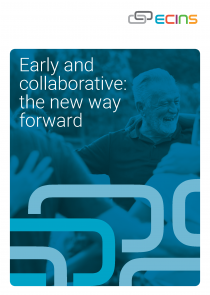by Claire George, Head of Service, Peterborough Pupil Referral Service
 “We use ECINS for evidence gathering in relation to information sharing, particularly around prevent work, sharing information from individual agencies with specific questions around vulnerability and risk because those are the decisions and judgements that partners are attempting to make together so it’s vital we have the right information to do that swiftly.
“We use ECINS for evidence gathering in relation to information sharing, particularly around prevent work, sharing information from individual agencies with specific questions around vulnerability and risk because those are the decisions and judgements that partners are attempting to make together so it’s vital we have the right information to do that swiftly.
“From a safeguarding point of view ECINS supports gathering evidence from a range of sources which builds a picture, far more quickly than any other system, of risk and vulnerability and will then determine the actions that need taking, whether it’s manageable at our level or whether we need to pass it on to a risk holding agency such as Childrens Social Care.
“In school we work with children that are on Full Child Protection Plans, Child in Need Plans and we have a number of Looked After Children. Each of those have their own very specific legal framework and processes and we work as a partner to contribute to those risk management processes. Using ECINS enables us to have the full range of information and to be fair, to quite frequently challenge the decisions that are made by the risk holding agencies such as Childrens Social Care.
“We will have information the school have given us, but the reason the first thing we do is to carry out a home visit is because the school will present their version as they see it and understand it but it’s only by going into someone’s home and into their arena that you get a real sense of the lived experience of the child. We will come out of a home visit and immediately put things into motion like food parcels, benefit checks or perhaps getting the police involved because mum has just disclosed something that needs attention.
“We use ECINS to information share in realtime and some of that is extremely sensitive information but we are able to do that information sharing very securely in a single place. Having that full picture enables those professionals around the table to make sound judgements as to the risk an individual poses and then collectively make decisions about how we work to mitigate that risk. Ultimately you are talking about people who have the potential to commit an act of terrorism.”


